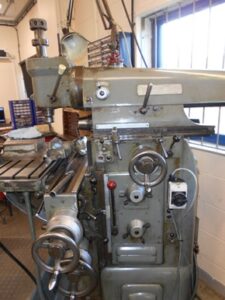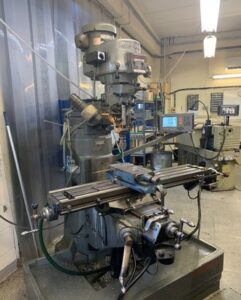At CPL, whilst we pride ourselves on being at the forefront of engineering and innovation – we still recognise the importance of traditional engineering skill and the human touch.
 In a corner of the expansive Production Hub, resides the “Manual Department”, a team dedicated to the old ways of machine engineering, using the skills of the past to inform the Research and Development of the future.In this Department we are often developing prototypes and exploring the design of complex and intricate components for our clients. The technical and engineering skill of the team is second to none, and it is an important facility, enabling the next generation of engineer apprentices to learn skills that help them both understand and improve on the jobs that our digital manufacturing machines undertake.
In a corner of the expansive Production Hub, resides the “Manual Department”, a team dedicated to the old ways of machine engineering, using the skills of the past to inform the Research and Development of the future.In this Department we are often developing prototypes and exploring the design of complex and intricate components for our clients. The technical and engineering skill of the team is second to none, and it is an important facility, enabling the next generation of engineer apprentices to learn skills that help them both understand and improve on the jobs that our digital manufacturing machines undertake.
Chris Horne is key to keeping these essential skills alive. He joined Craychase Ltd in 1981, before the business was acquired by CPL in 2002. Originally from South London, his family relocated to Biggleswade when he was 16, due to his father’s company relocation.
Chris started an apprenticeship in engineering at Smart and Brown, Biggleswade making precision lathes before joining Craychase. Chris said “I have seen many changes over the years, back in the day, parts were designed to fit a machine, where with today’s technology the machines are now designed to make the parts whatever they need to be. In many companies the younger generation are no longer trained in the old ways, and rely on everything being done by computers. It is essential for the critical nature of our work, that the human skills are not lost.”
Working alongside Chris is Stephen Tokens. He joined Cambridge Precision in 1989 on an engineering apprenticeship, leaving to gain experience elsewhere for a decade and then returning to Cambridge Precision in 2008. He appreciates the benefits of both manual and digital engineering, but prefers the hands- on, problem solving that his role in the Department provides. Some recent, very hi-tech jobs, could just not have been worked through for digital production without the design, development and adaptations recommended by the Manual team. “In the Department we still use many of the original machines acquired by Cambridge Precision over the years. Machines like the Bridgeport Series I Standard Mill – the original, all-purpose mill that has been the “real thing” in milling, drilling, and boring for metalworking shops throughout the world for the past 70 years, or the Colchester Master 2500, first built in the 1960s and still used worldwide as the number one lathe for education. There are newer machines within the Department like the Harrison M250 manufactured in the 1990s, each has its plus points and we are fortunate that here, the quality and skill of manual engineering is still respected and allowed to influence production processes.”



